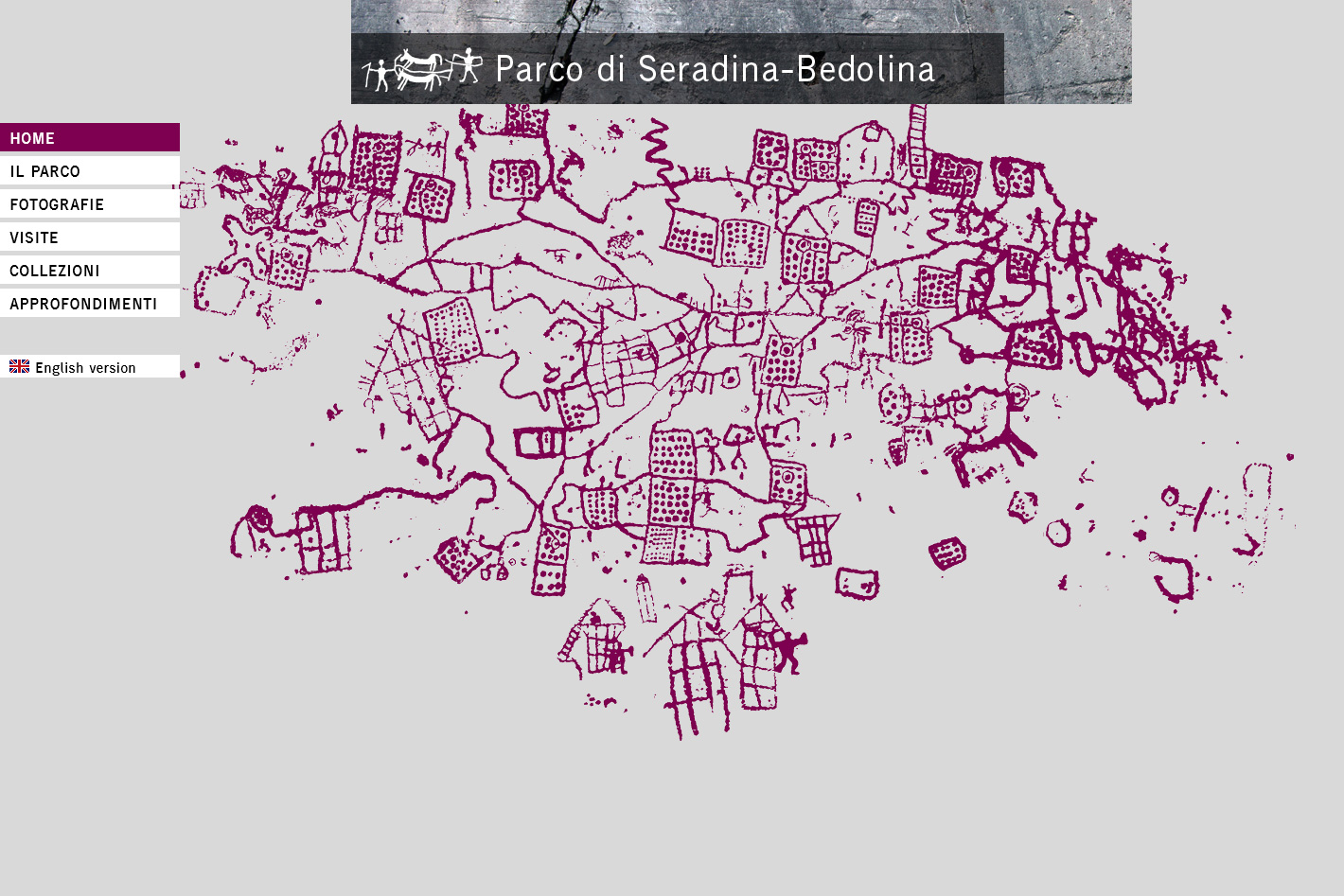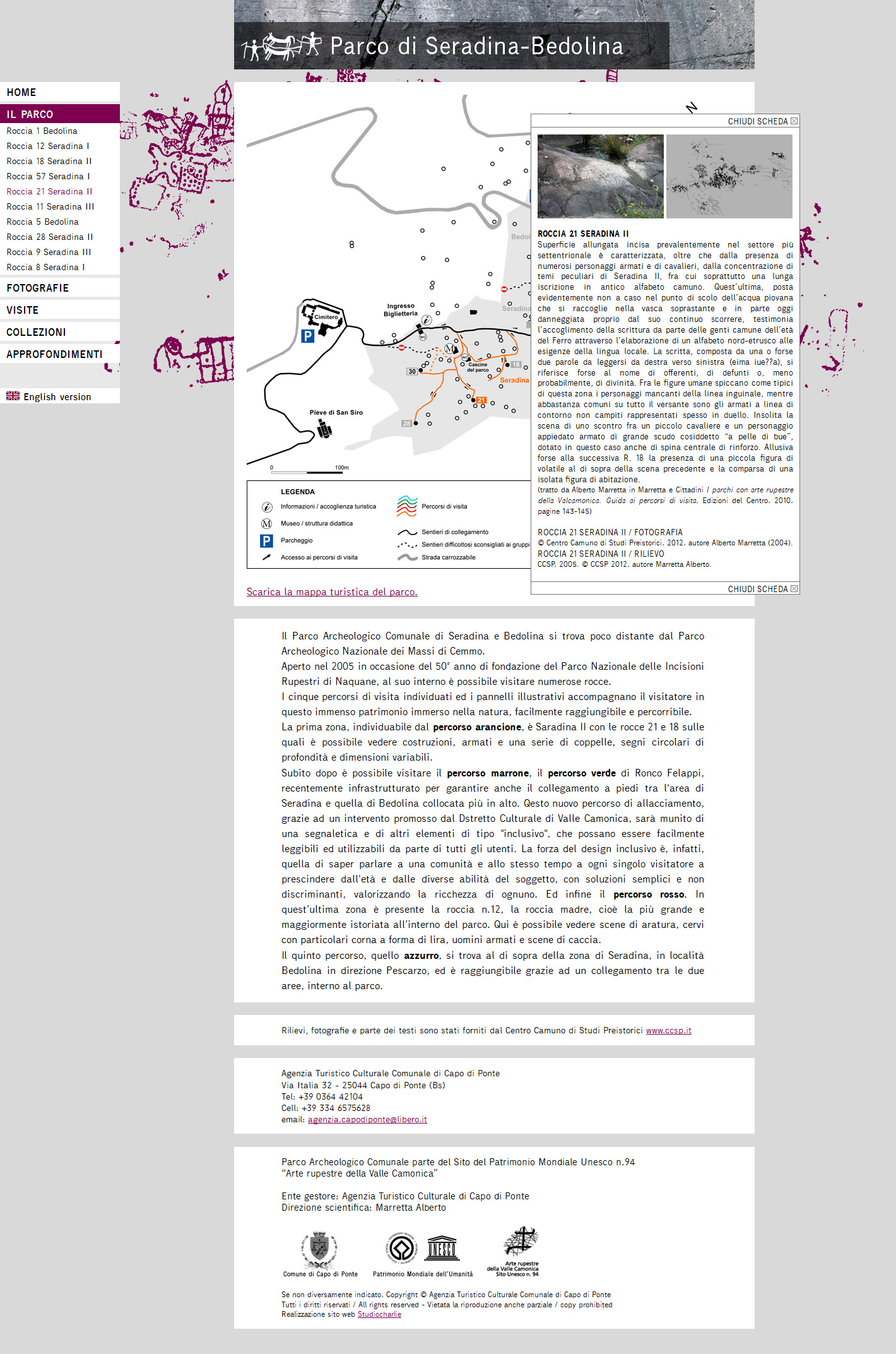

PARCO ARCHEOLOGICO COMUNALE DI SERADINA-BEDOLINA. Sito web. Il Parco Archeologico Comunale di Seradina-Bedolina viene istituito nel 2005 e, collocato sul versante idrografico destro del fiume Oglio, raccoglie al proprio interno rocce incise principalmente a cavallo dell’Età del Bronzo (2000 a.C) e dell’Età del Ferro (1000 a.C). Oltre che un Parco Archeologico quest’area può ben essere definita una piccola nicchia naturalistica: il Parco rappresenta infatti anche un micro ecosistema. Il microclima che lo caratterizza ha permesso a particolari specie vegetali, come l’“Opuntia Compressa” (un fico d’India nano dalle infiorescenze gialle e frutti rossi) di trovare il proprio habitat ideale. Posto in posizione panoramica il Parco permette al visitatore di apprezzare il fascino dell’Arte Rupestre in un contesto “magico” e coinvolgente, considerato dall’uomo preistorico un santuario d’altura, protetto da Pizzo Badile e Concarena, due montagne che, in particolari periodi dell’anno, danno luogo a spettacolari fenomeni di luce. /// SERADINA-BEDOLINA CITY ARCHAEOLOGICAL PARK. Website. Instituted in 2005 in occasion of the 50th anniversary of the National Park of Rock Engravings of Naquane, the City Archaeological Park of Seradina and Bedolina preserves a lot of engraved rocks with, principally, single figures, men with weapons also on horses, hunting beatings, plough scenes. These carvings have been dated, mostly, between Bronze Age (2000 b.C.) and Iron Age (1000 b.C.). In the highest zone of the Park (Bedolina) it is possible to admire the famous “Map of Bedolina”, probably a topographic reproduction of the surrounding territory. Inside the Park there are five different itineraries consisting of easy paths plunged in nature that visitors can follow in order to discover the sectors the Park consists of. The particular micro-climate characterizing this area permits the growth of uncommon natural species such as Opuntia Compressa (a little Indian fig). This context was considered, by prehistoric tribes, as a holy one and the mountains protecting the area (Pizzo Badile and Concarena), during special periods of the year, “play” with sun and its rays, producing light tricks.